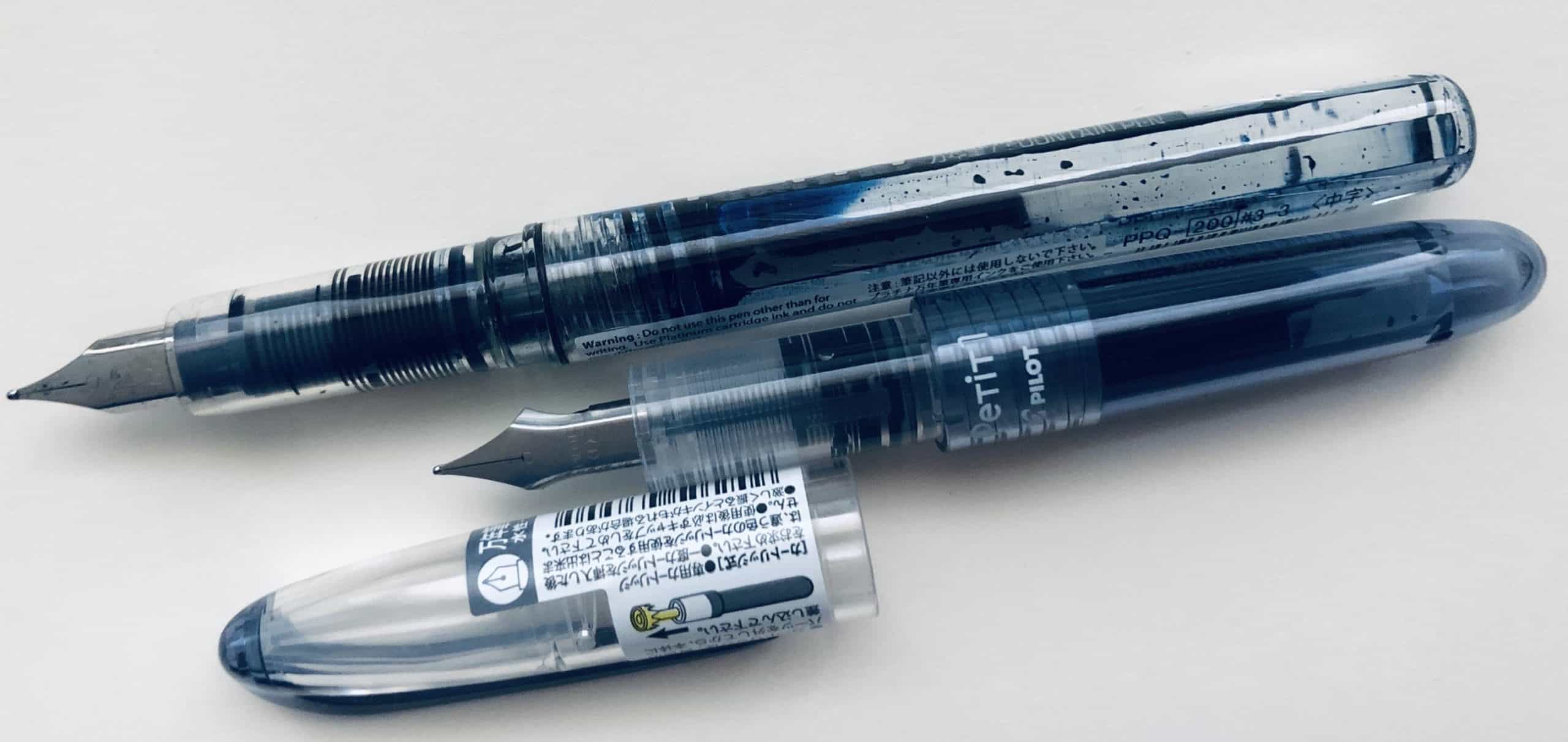Fountain pens are great, but the cleaning is, to put it lightly, a chore. Maintaining and caring for fountain pens takes time, and even if you don’t baby your pens their water-based ink still runs out more quickly than a ballpoint or rollerball. Want to change ink color? That requires a cleaning too.
So cleaning comes with the territory, but what’s the right way to do it?
The Fountain Pen Cleaning Challenge
The drudgery with fountain pen cleaning comes from the fact that most inks are incredibly resilient. Despite being water-based, inks have dyes or pigments that are retained by the pen’s feed (it’s the feed’s job after all) as well as the nooks and crannies of the pen’s interior. This means a gentle flush with water is rarely enough to get your pen clean. At the very least, many flushes are required.
Many flushes means repeated handling, which means lots of chances to drop the pen or damage the internals. Slow and steady is the way to win this race.
Fountain Pen Cleaning Tools
- Some kind of clear cup (tall and narrow is the best)
- A source of water
- Paper towels
- Optional: A flushing bulb or fountain pen syringe
- Optional: Fountain pen cleaner
- Speedball Pen Cleaner
- Platinum Pen Cleaner
- Rohrer & Klingner Fountain Pen Cleaner
- Monteverde Fountain Pen Flush
- DIY: Ammonia or Bleach
Basic Fountain Pen Cleaning
The most basic process for cleaning a fountain pen is simple, for a cartridge/converter pen you’ll want to:
- Take the pen apart, removing the cartridge, the cap, etc.
- Run it under water (either cool or warm, never hot) to do a bulk removal of ink.
- Occasionally give the pen a light shake to move the process along and prevent bubbles
- If water still isn’t running clear through the pen, soak the nib and grip section in water. Required times can range from an hour to overnight, depending on your ink. The bottom of the cup should be clear when you are done
- Stuff your dry cleaning cup with a paper towel and place the pen nib-down in the towel.
- Give the water a few hours to be pulled out
- Make sure your pen is sufficiently dry before adding in. A bit of water won’t hurt the pen, but it will lighten the ink color
One thing many people do to improve this process is to get a fountain pen bulb, fill it with water, put it to the back of the open pen, and then push the water through the pen. This will move your cleaning to high-speed mode and really get the job done well. This action is similar to forcing clean water in and out of the pen with a converter or piston-filler.
If you’re pen is a piston-filler, you’ll want to modified this process by allowing some soak time. This will help loosen up the ink that is deeply seated in the pen, since you can’t flush the pen as thoroughly or quickly as a bulb will be able to.
Some pens will have huge or troublesome feeds that will hold on to huge amounts of ink. For these you can allow some soak time in warm (not hot) water or in a fountain pen cleaning solution (options listed above). Up to 24 hours soaking can do wonders for a pen.
Does It Need A Full Teardown?
Some people will recommend fully taking apart a pen: not just removing the cartridge/converter, but pulling the nib and feed from the pen, separating the nib from the feed, and so forth. While this will certainly ensure a full clean, it’s rarely necessary. This would generally be done only on the following circumstances:
- a vintage pen is being restored
- a pen has been left for months and is very dried out
- a pen is thoroughly clogged
- you want to give the pen a deep clean ahead of storage
Ultrasonic Cleaners
You well see some people recommending ultrasonic cleaners for their fountain pen cleaning. Yes, it is possible to do an extremely deep clean with an ultrasonic cleaner, but we do not recommend this route.
Ultrasonic cleaners have gotten very affordable in the past years (under $40 for very well reviewed products) but there are too many risks for it to be worth it for us. For example, it a metal part touches the bottom of the container the metal-on-metal can cause scratching to pen parts. Also the ultrasonic cleaner can generate significant amounts of heat, enough to damage delicate plastic and ebonite parts. The heat can also breakdown old epoxy, the sort of thing that would seal, say, a Parker 51’s rubber sac to the body.
So while ultrasonic cleaners are low effort and affordable, they present some risks that just aren’t worth it.
FAQs
How Clean Does Your Fountain Pen Need To Be?
Generally, we here at Unsharpen.com are of the belief that “clean enough” is the way to go. If your pen just never seems to run perfectly clear water through it, that’s totally fine. Yes, some of your old color might affect your new color but that’s really not too big of a deal is it? If you are testing fountain pen inks then you’ll want to avoid this, but past that it’s really a minor point.
How Often Do Pens Need To Be Cleaned?
This is the truly major debating point. Some people say once a month, but that’s way too often for us. Sure, if you have a troublesome ink and/or a very expensive pen you’ll want to exercise caution, but generally every three months is more than fine. We’ve had some pens that are totally fine after 6 months of being left with ink in them. This will only work with a pen that is used occasionally and has a great cap seal — like the Platinum 3776 Century.
